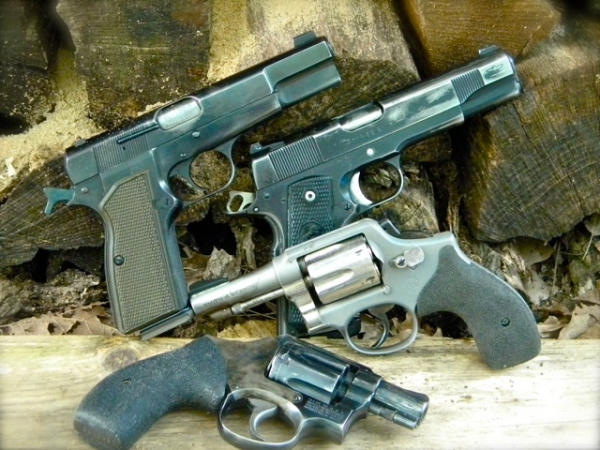
As a nation as lot of us have a strong attachment to our firearms. They are mechanical marvels. In the beginning firearms were produced one at a time; it took a talented craftsman to build a firearm. Mass production of firearms started the industrial revolution. Sam Colt - not Henry Ford – was the first to apply the principles of mass manufacturing to firearms.
Today we live in the golden age of the firearm; the options for quality, reliable firearms are almost endless. We like to show off our newest acquisitions. But ultimately, the majority of firearms are tools, not works of art. It’s important to remember that a firearm is a tool. Tools are to be used - not pampered.
A big part of a “first” firearms class is learning how to manipulate the weapon. This includes empty reloads. The pistol or rifle runs empty. Old mag out, new mag in and you chamber a fresh round. The “old” magazine, which is empty, is dumped on the ground. Unless you’re in the military, where you won’t be re-supplied with fresh mags, that empty magazine has no use. Retaining an empty mag takes time; getting the weapon loaded is more important.
A lot of students have never let their empty mag hit the ground. “But won’t it get scratched?” they ask. The thought of scratching or adding blemishes to their equipment never crossed their mind. The same is true when we have them ground their weapons on the deck. They gently set them down, face grimacing as the gravel makes contact with the weapon.
Taking care of your firearms is essential. You take them apart for cleaning, inspecting the various parts for wear or breakage. Lubrication ensures proper functioning, and prevents rust from developing. But don’t be worried about what the outside look like. In fact, if you actually use it, there’s going to be some cosmetic damage. For example, just during barricade and cover training/practice you’re going to bang and nick up your weapon. Like any well-used tool they are going to get some “character.”
Just carrying in a holster is going to wear the finish. When you dry practice your draw, scan and holster – which I know everyone does faithfully – more wear. One way to manipulate your weapon during injury drills is to use objects in the environment to cycle or rack the charging handle or slide. This is definitely going to “leave a mark.”
I teach a “Two-gun” class, where students work with two pistols. When one runs empty they perform a “New York reload,” dropping the empty weapon on the ground while drawing a loaded pistol. All of these skills have to be practiced, just like every other fighting technique. As you learn how to use your firearm it’s going to get wear marks.
A work of art is something that is to be admired and cherished. Art is beautiful, and stirs the emotions. A tool is used to perform a task; you don’t set it on a shelf for all to gaze upon. Like I tell everyone, “It ain’t gotta be pretty, it just has to work.” Plus, even though your weapon may be worn, other shooters will admire it.
Tiger McKee is director of Shootrite Firearms Academy, located in northern Alabama. He is the author of The Book of Two Guns, AR-15 Skills and Drills, featured on GunTalk’s DVD, “Fighting With The 1911 and has regular columns in Gun Digest and American Handgunner.
http://www.facebook.com/pages/Shootrite-Firearms-Academy/156608611038230?ref=ts